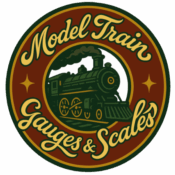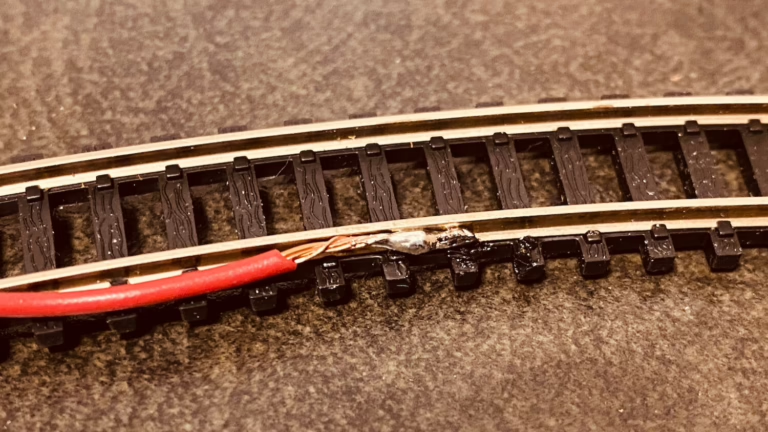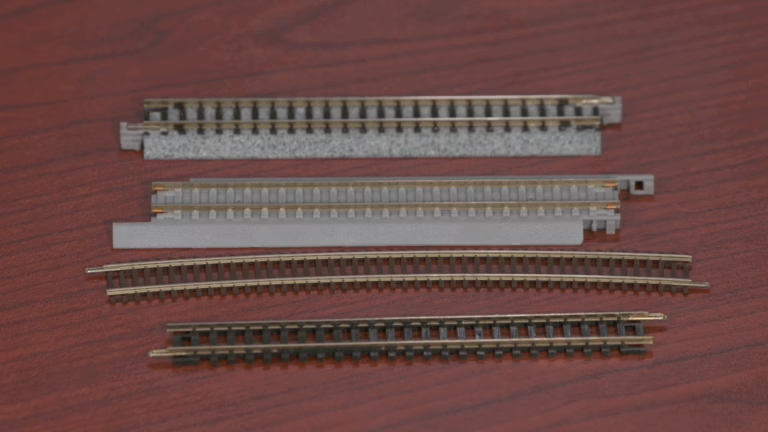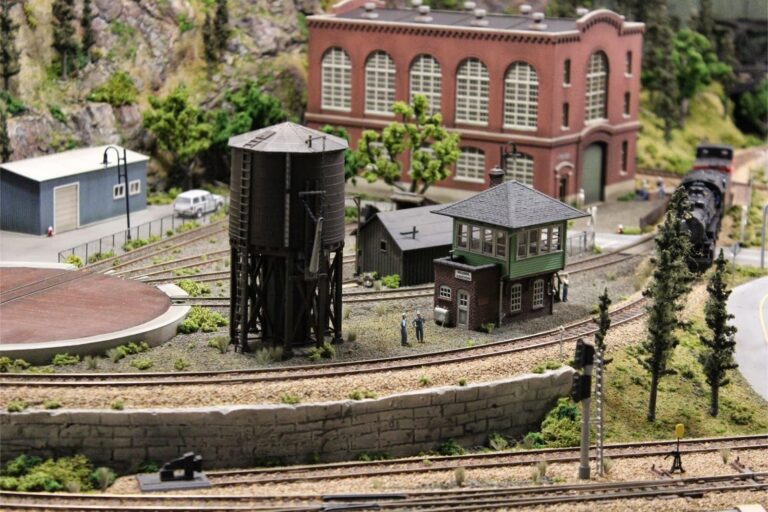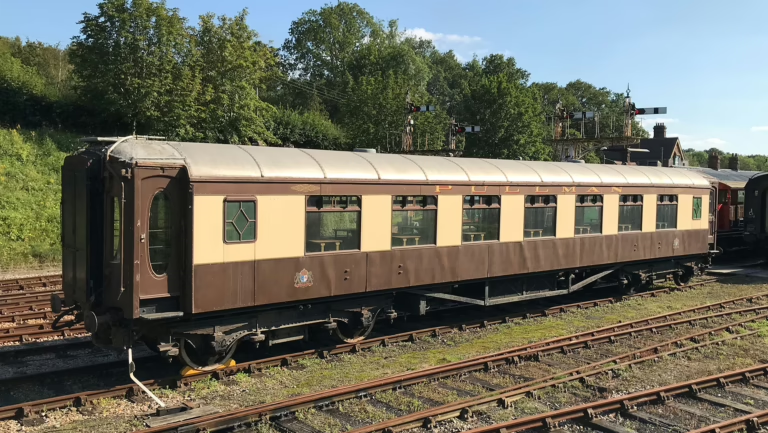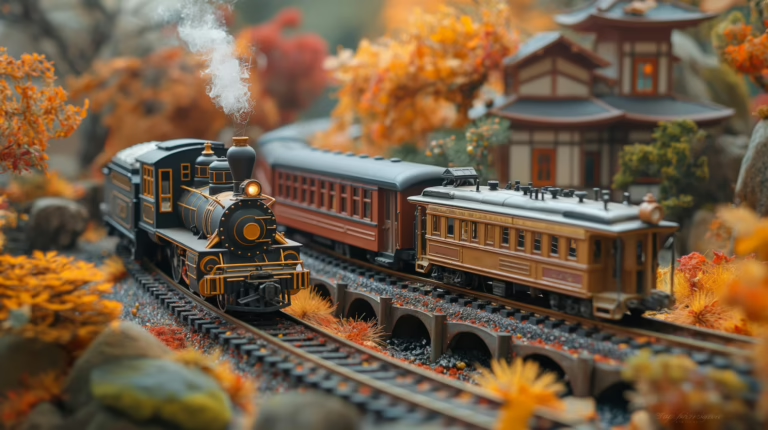How to Choose a Model Train Scale for Beginners

Getting into model trains can feel overwhelming fast—especially when you realize how many different scales exist. HO, N, O, G, S, Z… what do they all mean? And which scale is right for you?
This guide breaks down the most popular model train scales in plain language. Whether you’re dreaming of a basement-sized railroad empire or just a compact setup for a corner table, the scale you choose will shape everything: the size of your trains, how much space you’ll need, what you’ll spend, and what kind of details you can pack in.
Each section in this primer focuses on one scale. We’ll cover its history, how it became popular, what makes it appealing, what kind of space and budget it demands, and which manufacturers dominate that scale. We’ll also be honest about the drawbacks—no sugarcoating.
This is the no-nonsense, beginner-friendly overview every new model railroader needs to get started smart.
Let’s jump in.
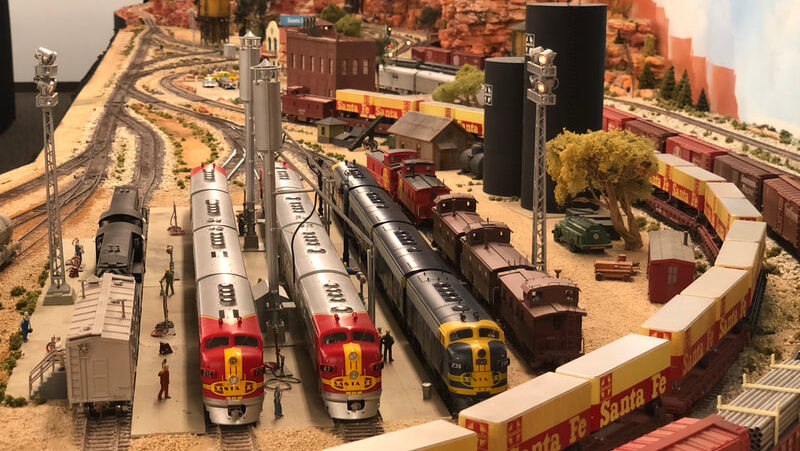
HO Scale (1:87)
Popularity & Origins
HO is hands-down the most popular model railroading scale globally, especially in North America and continental Europe. It emerged in the 1920s in Germany as a more practical alternative to O scale, with the first products by Bing circa 1922; Märklin followed in 1935. Post‑World War II, HO took off in the U.S. during the 1950s–60s as plastics lowered costs and realism became a priority. By the mid‑1950s it overtook O scale and now dominates two-thirds of the market.
Why It’s Popular
It strikes a perfect balance of detail and space efficiency: models are large enough for good detailing yet compact enough to build elaborate layouts on a modest footprint like a 4×8 ft table. With an enormous ecosystem—tracks, buildings, scenery, DCC electronics—it’s the go-to for hobbyists of all skill levels.
Key Manufacturers
- Bachmann, Athearn, Atlas, Kato, Märklin, Fleischmann, Rivarossi—offer a wide range from ready-to-run starter sets to highly detailed brass and DCC sound-ready models.
Popular Features
- Large selection of locomotives, rolling stock, kits, scenery, structures
- Digital Command Control (DCC) & sound-equipped models
- Extensive aftermarket parts for customization
- Strong community with clubs, shows, and publications
Disadvantages
- Space-intensive compared to smaller scales
- Costs add up as realism features (DCC, sound, brass) increase
Outlook for Beginners
Ideal for first-timers who want a balance of accessibility and detail, with room to grow. DCC entry-level starters are easy to learn on, and a thriving second-hand market means affordable upgrades.

N Scale (≈1:160)
Popularity & Origins
Second only to HO in North America and Europe. N scale originated in Germany in the early 1960s, arriving in the U.S. by 1967. It saw meaningful technological advancement in the 1990s–2000s, rivaling HO in fine detail.
Why It’s Popular
About half the size of HO, it allows for longer trains and complex layouts in limited spaces. Perfect for small apartments, coffee tables, or those who want a huge mountain scenery in a tight area.
Key Manufacturers
- Kato, Walthers, Rapido Trains, BLMA, Fleischmann, Atlas, Micro-Trains—known for sharp tooling and top-tier brass locomotives.
Popular Features
- High fidelity detail, modern tooling
- Compact scene creation with long runs
- Budget-friendly compared to HO for complete layouts
- Growing DCC sound offerings
Disadvantages
- Tiny parts are delicate and hard to handle
- Dust and maintenance more challenging
- Fewer scenery options than HO
Outlook for Beginners
Great if you’re tight on space or love large scenery-in-miniture. Requires steady hands and careful cleaning. An excellent middle ground between maximum realism and minimum space.

O Scale (1:48)
Popularity & Origins
Once king in the early 20th century as a toy/train hybrid, especially after Märklin and Lionel kicked off mass production in the 1930s. Though eclipsed by HO post‑1950s, it remains iconic, especially among holiday-set-ups and vintage collectors.
Why It’s Popular
At nearly twice the size of HO, O scale is a visual feast—great for rich detail, heavy locomotives, and elaborate celebrations-themed layouts . It’s commonly seen around Christmas trees, museums, and display tables.
Key Manufacturers
- Lionel, Atlas‑O, Williams/Bachmann, MTH, Industrial Rail —bridging vintage classics and modern high-fidelity models.
Popular Features
- Heroic size for handling and detailing
- Strong electric toy-train heritage with rugged builds
- Available in variants like On30 (O‑scale chassis on HO‑gauge track)
- Good for switching, animations, and oversized accessories
Disadvantages
- Space-hungry—requires layout room that many can’t spare
- Higher costs: trains, track, and scenery
- Toy-ish nostalgia sometimes trumps scale realism
Outlook for Beginners
If you’ve got space (garage, basement), love vintage flair, or want a centerpiece layout, O scale delivers drama. Expect investment, but enjoy show-stopping presence.

G Scale (≈1:22.5, plus variants up to 1:32)
Popularity & Origins
Known as garden railways, G scale was popularized in the late 1960s by LGB in Germany. Today’s G includes multiple ratios—1:22.5, 1:24, 1:29, 1:32—driven by manufacturers like LGB (now under Märklin), Bachmann Big Hauler, USA Trains, HLW/Delton, and AristoCraft.
Why It’s Popular
These large-scale models thrive outdoors—patio gardens, yards, and displays. Tough build quality, weather-resistance, and bold presence make them favorites for family displays and park layouts.
Key Manufacturers
- LGB, Bachmann (Big Hauler), USA Trains, AristoCraft (1:29), HLW/Delton .
Popular Features
- Large, durable models with great weather resistance
- Outdoor-themed accessories: tunnels, bridges, foliage
- Easy to handle—no tiny nuts and bolts
- Great for kids, family projects, and garden settings
Disadvantages
- Require a ton of physical space
- Outdoor setups need maintenance and power solutions
- Models cost more; track and electronics can be pricey
Outlook for Beginners
Perfect if you’ve got a backyard or porch and want a bold, interactive layout that doesn’t require fine detail work. Great for family and group engagement.
Bachmann Trains – Ringling Bros. and Barnum & Bailey – LI’L Big Top

S Scale (1:64)
Popularity & Origins
Larger than HO but smaller than O, S scale models saw popularity in mid‑20th century. Though a minority scale today, it retains a dedicated community.
Why It’s Popular
It’s a happy medium: more detail than HO, less space than O. Durable and easy to work on, S is beloved by switchers and kit builders .
Key Manufacturers
- American Models, Atlas‑O, Aster, plus secondary‑market vintage equipment.
Popular Features
- Good detail with manageable size
- Robust model runs and good for club layouts
- Mix of DC/AC versions for classic realism
Disadvantages
- Smaller product range and club support
- Limited new tooling; needs active community for parts
Outlook for Beginners
Great if you prefer a mid-sized layout—say 2×4 ft—with high detail. Community smaller, but focused. Hobbyists often convert or 3D-print scenery using multiple sources.

Z Scale (1:220)
Popularity & Origins
Introduced by Märklin in 1972 as “Mini-Club,” Z is the smallest mainstream scale. Rare, but celebrated for tiny layouts.
Why It’s Popular
Perfect for exceedingly small spaces—briefcases, desktops, even dollhouses . Ideally suited to collectors who want to display long trains in limited room.
Key Manufacturers
- Märklin, Micro-Trains, Fleischmann—offering compact starter sets and improved fine tooling.
Popular Features
- Incredible space savings
- Challenging build—great for precision enthusiasts
- Layouts can be ultra-detailed micros
Disadvantages
- Tiny, fragile parts—very difficult to build/maintain
- Pricey per unit for the detail
- Limited selection; niche community
Outlook for Beginners
Not recommended for novices—Z is for detail obsessives with steady hands. Beautifully scaled micro layouts—but not forgiving for beginners.

Choosing the Right Scale for Layouts, Slot Car Integration, and Expansion
Once you understand the basics of each scale, it’s time to think beyond the trains themselves. Your layout—the space, theme, and future accessories—will shape your long-term enjoyment. Some scales lend themselves better to sprawling landscapes, while others are ideal for compact cityscapes or even crossover with slot cars.
Best Scales for Layout Building
- HO Scale (1:87): The sweet spot for most home layouts. It allows realistic scenery and long train runs without requiring a garage-sized space. A 4×8 ft plywood sheet is enough for a basic oval with sidings and scenery. Tons of pre-made buildings, bridges, tunnels, and terrain kits are available from Woodland Scenics, Walthers, and Noch.
- N Scale (1:160): Best for maximum layout in minimum space. You can fit what would be a room-sized HO layout into a coffee table. It’s a favorite for apartment dwellers or anyone looking to model dramatic elevation changes like mountain passes.
- O Scale (1:48): Ideal for display-focused layouts. Great for centerpieces, holiday villages, or museum-quality dioramas. Requires more room, but the visual impact is unbeatable.
- G Scale: Perfect for outdoor layouts—gardens, patios, and backyard railways. If you’re looking for a family project or year-round attraction, G scale offers durability and weather resistance.

Slot Car Compatibility
If you’re thinking about combining trains with slot cars, scale matters:
- HO Scale trains (1:87) are often paired with slot cars in 1:64 scale, which is slightly larger but close enough for toy-grade crossovers.
- S Scale (1:64) is a near match for most slot cars, making it the best choice for true scale compatibility. The cars and trains look proportionate on the same layout.
- O Scale (1:48) and 1:43 slot cars can also work together, especially in display setups or larger track environments.
Manufacturers like AFX, Scalextric, and Auto World offer slot cars and tracks that can blend well into model train scenery, especially when layouts emphasize roads, bridges, or depots.
Expandable, Beginner-Friendly Materials
If you’re starting small but want room to grow, look for modular systems and kits that can scale with your ambitions:
- Track Systems: Brands like Kato (Unitrack), Bachmann (EZ Track), and Märklin (C Track) offer snap-together track that’s easy to assemble and expand. These modular systems reduce wiring headaches and are ideal for evolving layouts.
- Building Kits: Start with simple plastic or laser-cut kits from Walthers Cornerstone, Woodland Scenics, and Model Power. As your skills grow, you can move into more detailed kits or even scratch-building.
- Scenery Packs: Woodland Scenics and Noch provide themed packs with trees, turf, ballast, and roads. These let you develop consistent visual themes in manageable chunks.
- Power and Control: Many starter sets are DC-powered but DCC-ready. Upgrading to DCC (Digitrax, NCE, ESU LokSound) allows multi-train control and onboard sound, making operations more immersive.
- Rolling Stock and Locomotive Storage: Foam-lined cases from Axian or Plano help protect growing collections. Wall-mounted display shelves offer a practical and eye-catching way to showcase trains.
- Starter Tools: A sharp hobby knife, tweezers, a soldering iron, and a small multimeter will carry you far. These tools are low-cost and will be useful at every stage.
- Expansion Packs: Look for bundle deals on rolling stock or track sections. Many manufacturers offer expansion packs specifically designed to build on their starter sets.
Starting small is smart—but choosing materials that grow with you makes the journey smoother. With the right base, your layout can evolve from a tabletop loop to a full-blown railroad empire without needing a total rebuild.
Final Thoughts: Start Smart, Grow Confident
Model railroading isn’t just a hobby—it’s a craft, a creative outlet, and for many, a lifelong passion. The scale you choose sets the tone for everything that follows: how much space you’ll need, how much you’ll spend, how detailed your builds can be, and what kind of layout experience you’ll enjoy.
If you’re just starting out, don’t worry about doing everything at once. Choose a scale that fits your space, budget, and interests. Start with a simple oval and a small roster of rolling stock. Build scenes one step at a time. Learn by doing—and enjoy the process.
Most importantly: stay curious. Join forums, visit local train shows, talk to hobby shop owners, and don’t be afraid to ask questions. The model railroading community is one of the most passionate and generous out there.
Whether you’re running trains through a mountain pass, a bustling city, or your backyard garden, remember: every great layout starts with a single loop of track.
Start small. Dream big. Keep it on the rails.
